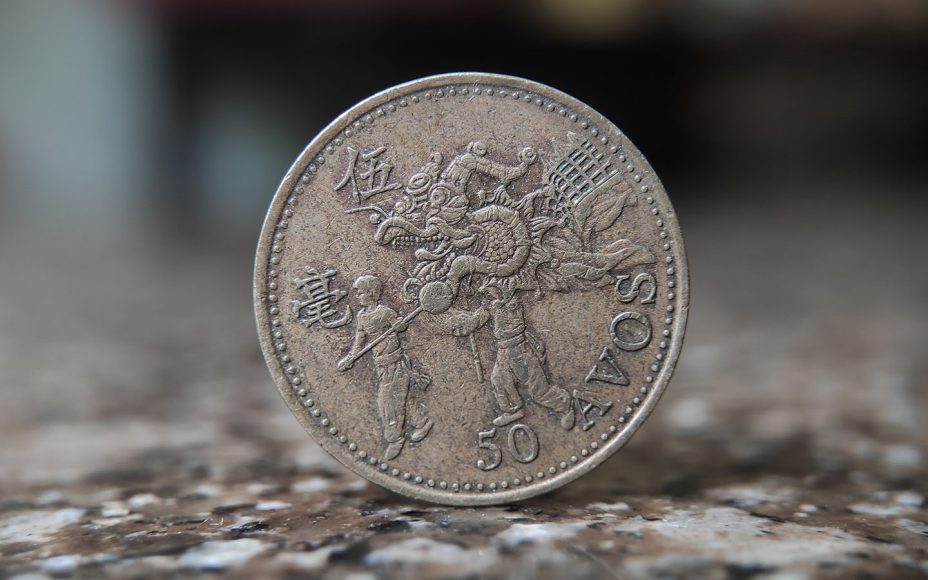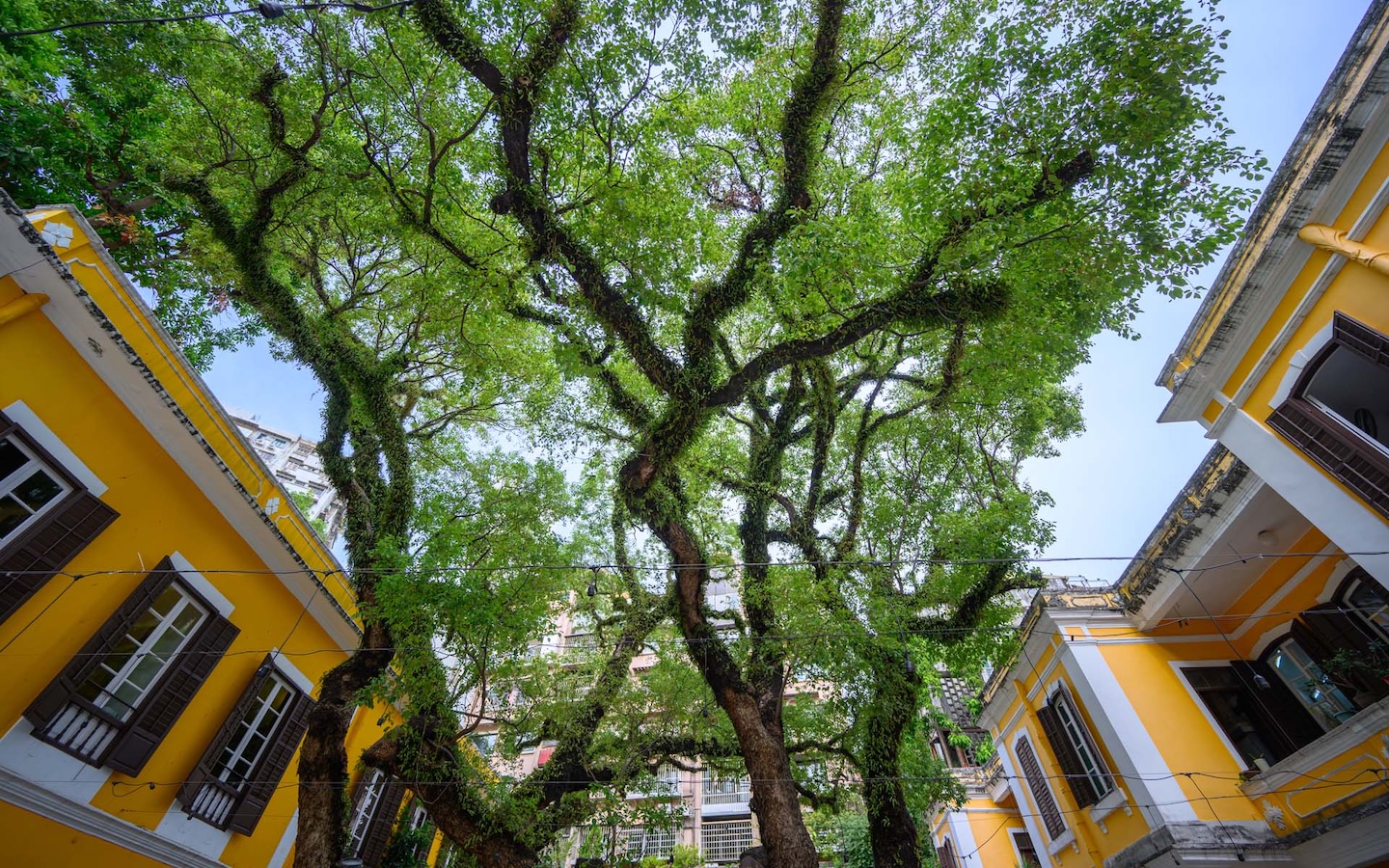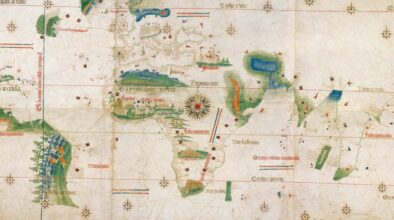Macao is fast becoming a cashless economy, with mobile banking and online payments gaining traction across society. Case in point: by the end of 2022, 90 percent of residents were registered with the online payment platform MPay. According to the director of the Macau Numismatic Society, David Chio, physical money could be relegated to relic-hood within the next decade. The society, incidentally, is dedicated to the study of coins and banknotes.
While the younger generations of today have already lost the habit of slipping pocket money into a piggy bank, Chio and his fellow numismatists remain firmly dedicated to cold hard cash – and the older it is, the better. These avid currency collectors view their spoils as puzzle pieces through which history can be visualised, not as money looking to be spent.
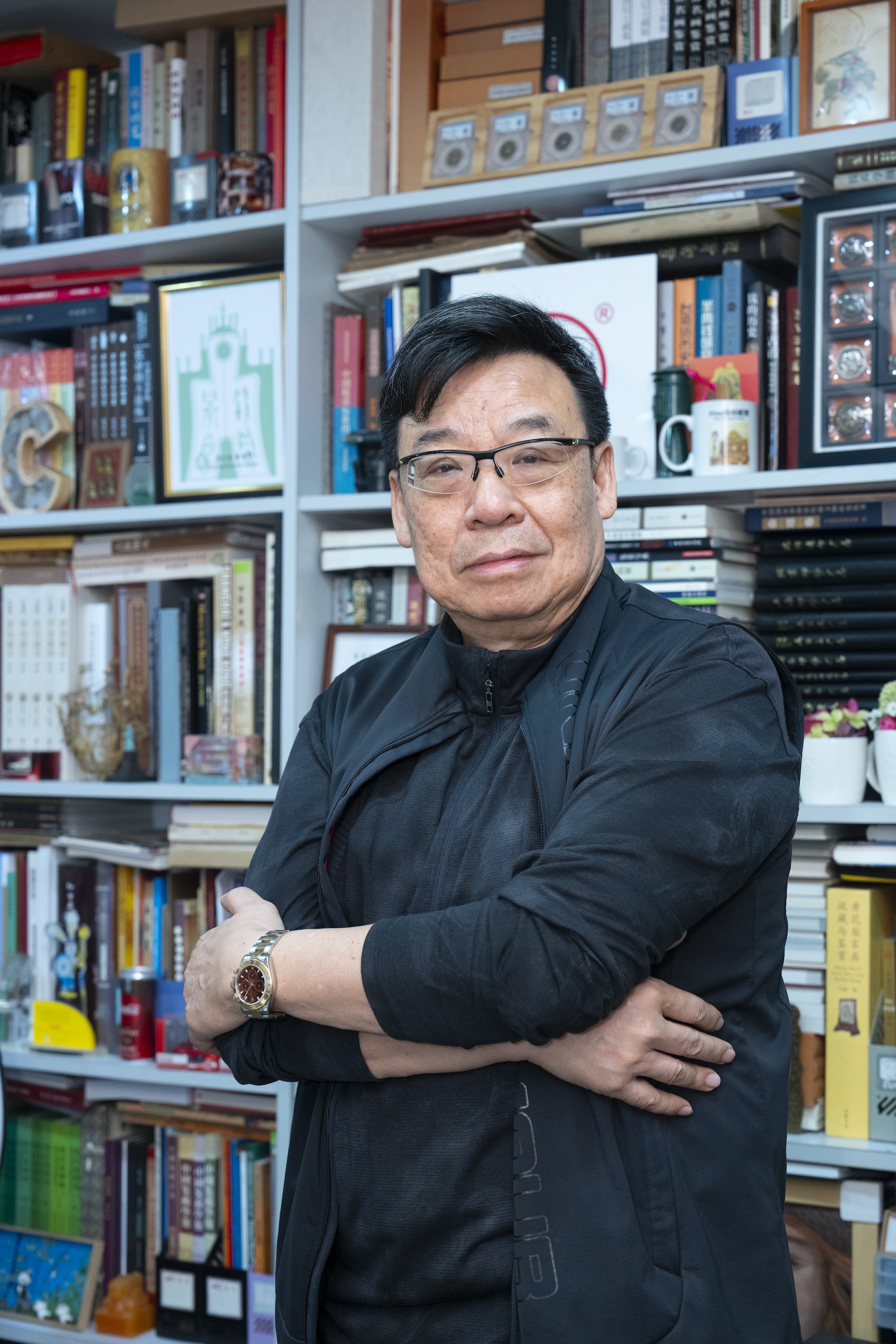
The Macau Numismatic Society publishes literature, hosts forums on numismatic trends, runs workshops for local schools, and organises an annual three-day exhibition of members’ collections. Most of its 600-odd members are from Macao, though about a fifth hail from the mainland and other parts of Asia, says Chio. Age-wise, they range from in their 30s to pushing 70. Founded in 1988, the society welcomes experts and hobbyists who gather monthly to show off their latest finds – for instance, a rare example of Macao’s earliest printed banknote (a five pataca bill from 1905) – and discuss how money has evolved throughout the territory’s long history.
The latter is a subject most numismatists are passionate about. It’s also an area where official information can be sparse in Macao, according to Chio. The 66-year-old says there are lost pockets of legal tender that the group has heard of, but have never been able to get their hands on. “We try to collect samples of everything,” he says. “But some we haven’t even been able to find at museums.” The society’s vice director, Lawrence Loi, offers an example: “According to news coverage at the time, a 500 pataca banknote was produced locally in 1944 – but we’ve never seen the real thing.”

Each member has their own special interest. Some collect antiquated Chinese coins issued by, say, the Qianlong Emperor (who ruled for much of the 1700s), while some focus on gathering as complete a compendium of Macao patacas as possible. Other numismatists seek examples of pre-pataca currency that were once traded in the city. Auction houses and antique shops are their main sources of bygone banknotes and coins, and many also have friends keeping their eyes peeled in other parts of the world.
The most serious collectors get their collections evaluated by third-party organisations like the US-based Paper Money Guaranty (PMG). PMG authenticates and grades banknotes based on their condition, rarity, and other factors. Many of the society’s members also collect other items, like ink pens, vintage lighters or stamps.
From pirate silver to Macao’s first official banknote
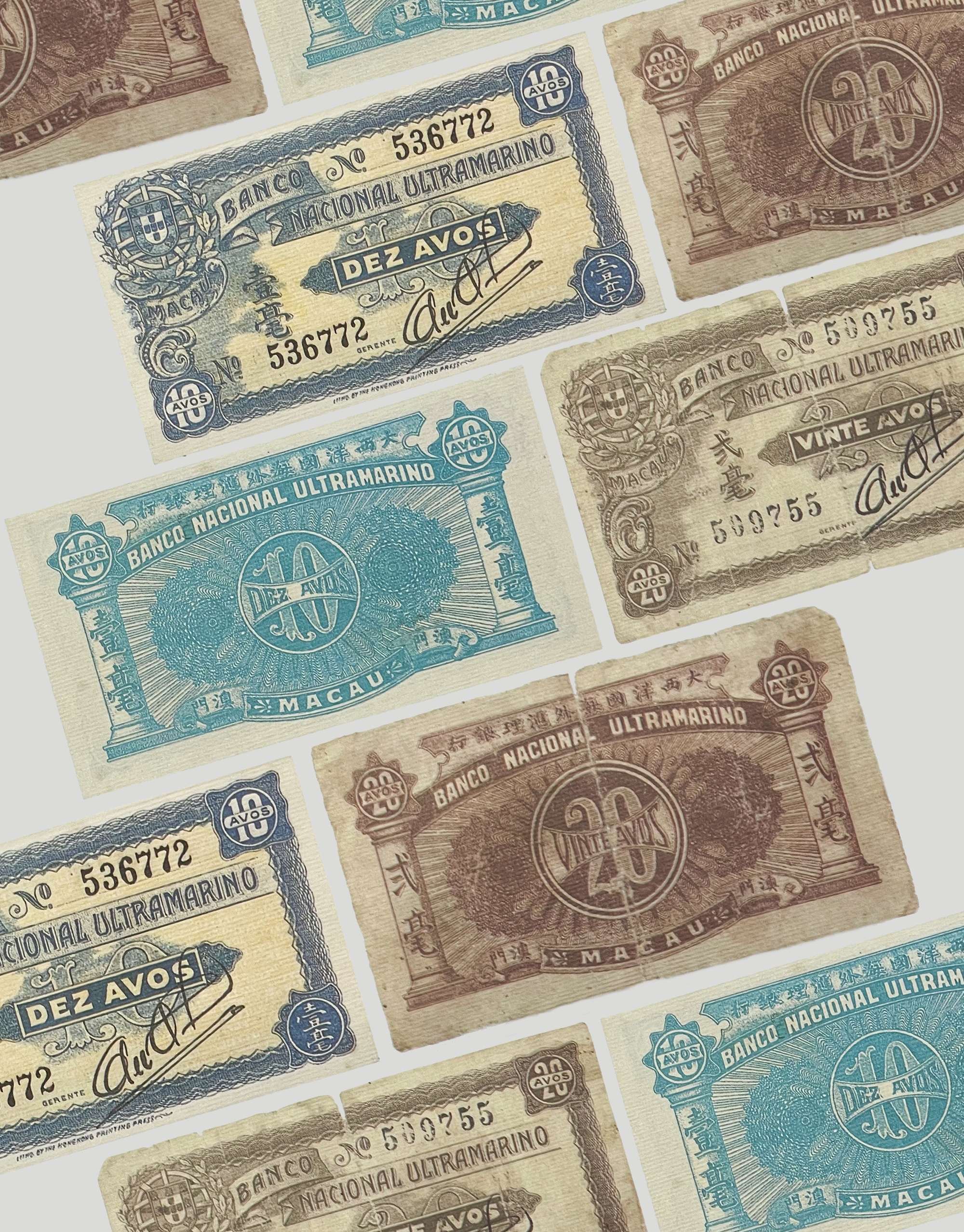
While Macao’s own currency, the pataca, has existed for more than a hundred years, commerce has been happening here for far longer. Back in the 16th century, Portuguese traders used a variety of coinage to buy and sell goods – from the fabled Mexican eight reales, also known as the pataca mexicana (silver coins minted by the Spanish Empire and highly prized by pirates) to shoe-shaped sycees of the Qing dynasty. By the turn of the 20th century, Hong Kong dollars, Straits Settlement dollars, and the old Chinese coins known as qian had been added to the mix.
At that time, Macao’s Portuguese administrators were struggling to keep track of all the different types of money in circulation. So, to make bookkeepers’ lives easier, Portugal declared it was time Macao had its own currency. In 1902, Banco Nacional Ultramarino (BNU) opened its first branch in the city. Three years later, it began issuing Macao’s first official money.
The original five pataca bills were printed like cheque books. Loi says that BNU’s local director personally signed each note, then tore it out of the book (creating a single perforated edge) to make it valid. “Back in 1905, five patacas was worth a month’s salary,” he adds.
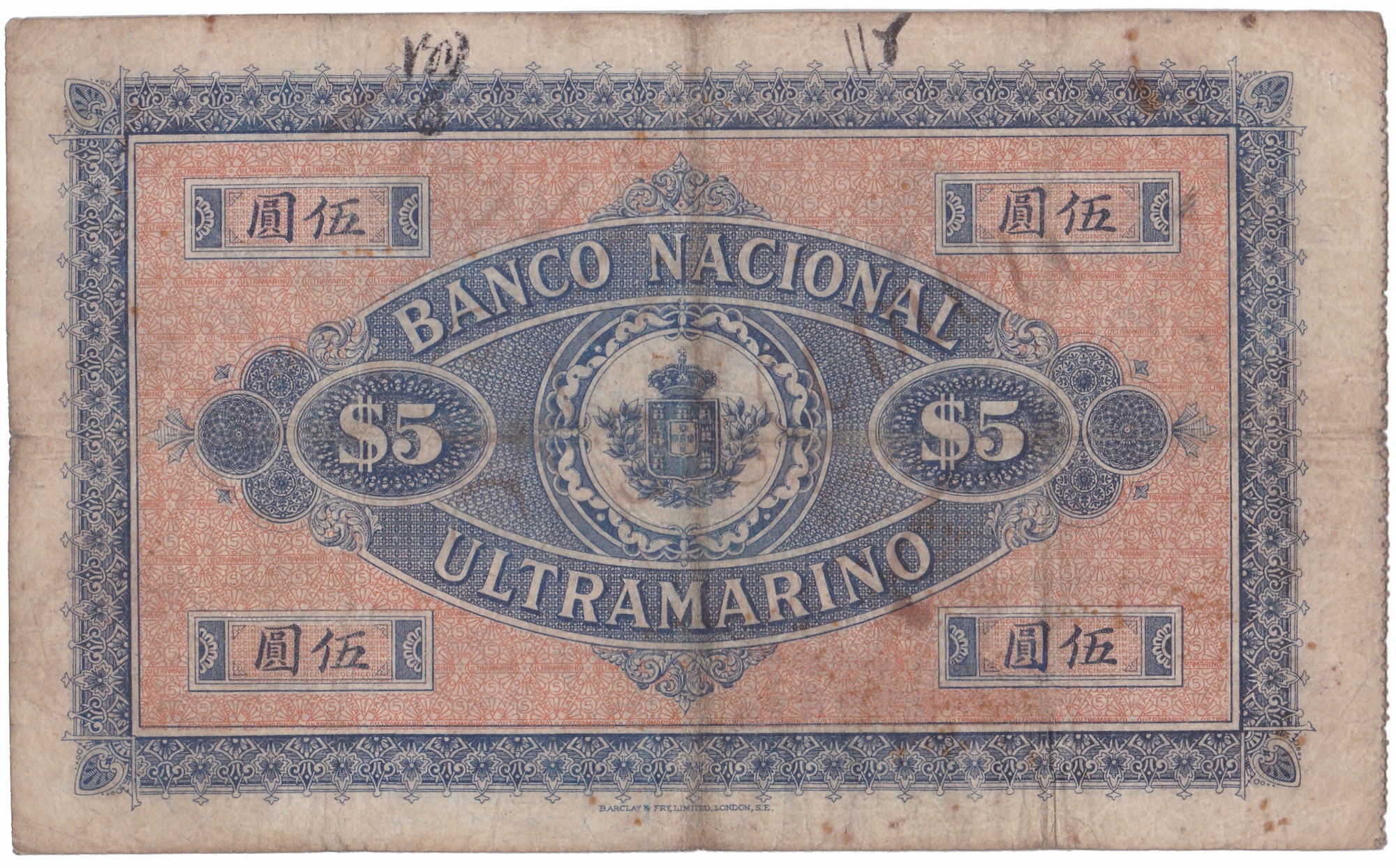
For their first few years of existence, patacas featured an image of the Portuguese crown. This was removed in 1910, after the October revolution overthrew Portugal’s monarchy and replaced it with a republic.
Crown or not, early pataca banknotes were of such poor quality that locals refused to use them. Macao people couldn’t believe these flimsy slips of paper – which had been printed in London – could possibly hold the same value as silver or gold, so continued using a medley of foreign currencies to pay for their day-to-day needs. A 1914 report from BNU noted that even civil servants rushed off to exchange their paper pataca salaries for coins, at shockingly low exchange rates.
Around this time, deposit certificates issued by private Chinese banks joined the melee. Unlike patacas, these so-called pangtan could be swapped on demand for real silver. They were used like banknotes in Macao up until 1944, when the territory’s authorities banned them.
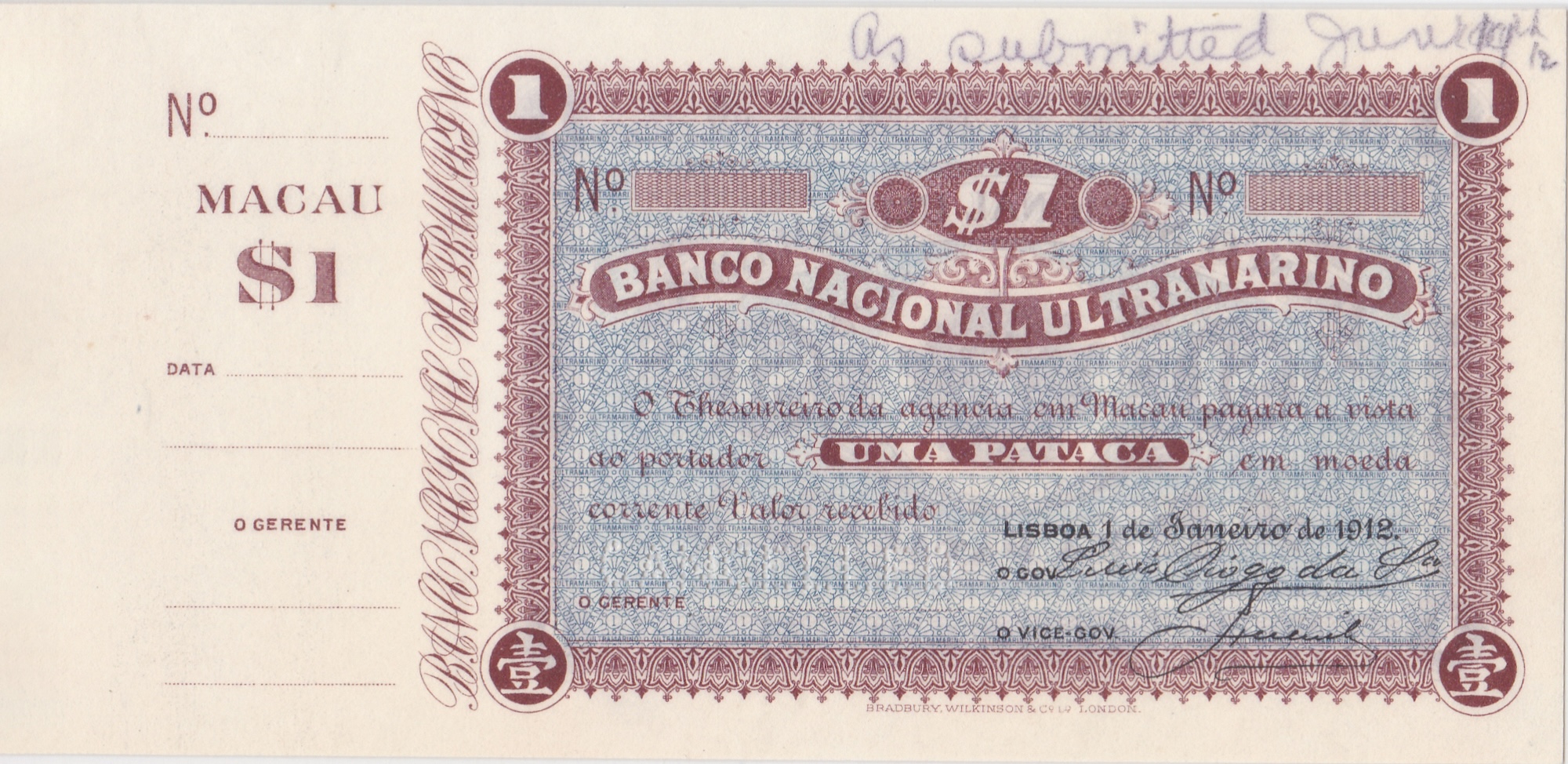
People’s aversion to local currency did not stop innovations in the pataca printing process (perforated edges were phased out between 1919 and 1924), and nor did it prevent an increasing range of banknotes from being developed. The first avos – the equivalent of cents – were issued in 1920, with one hundred avos making up one pataca. According to Loi, paper avos’ design barely changed over the next 20 years aside from bank directors’ handwritten signatures. Through studying notes printed over this period, local numismatists have determined there were probably seven different BNU directors between 1920 and 1941.
WWII saw patacas printed locally for the first time
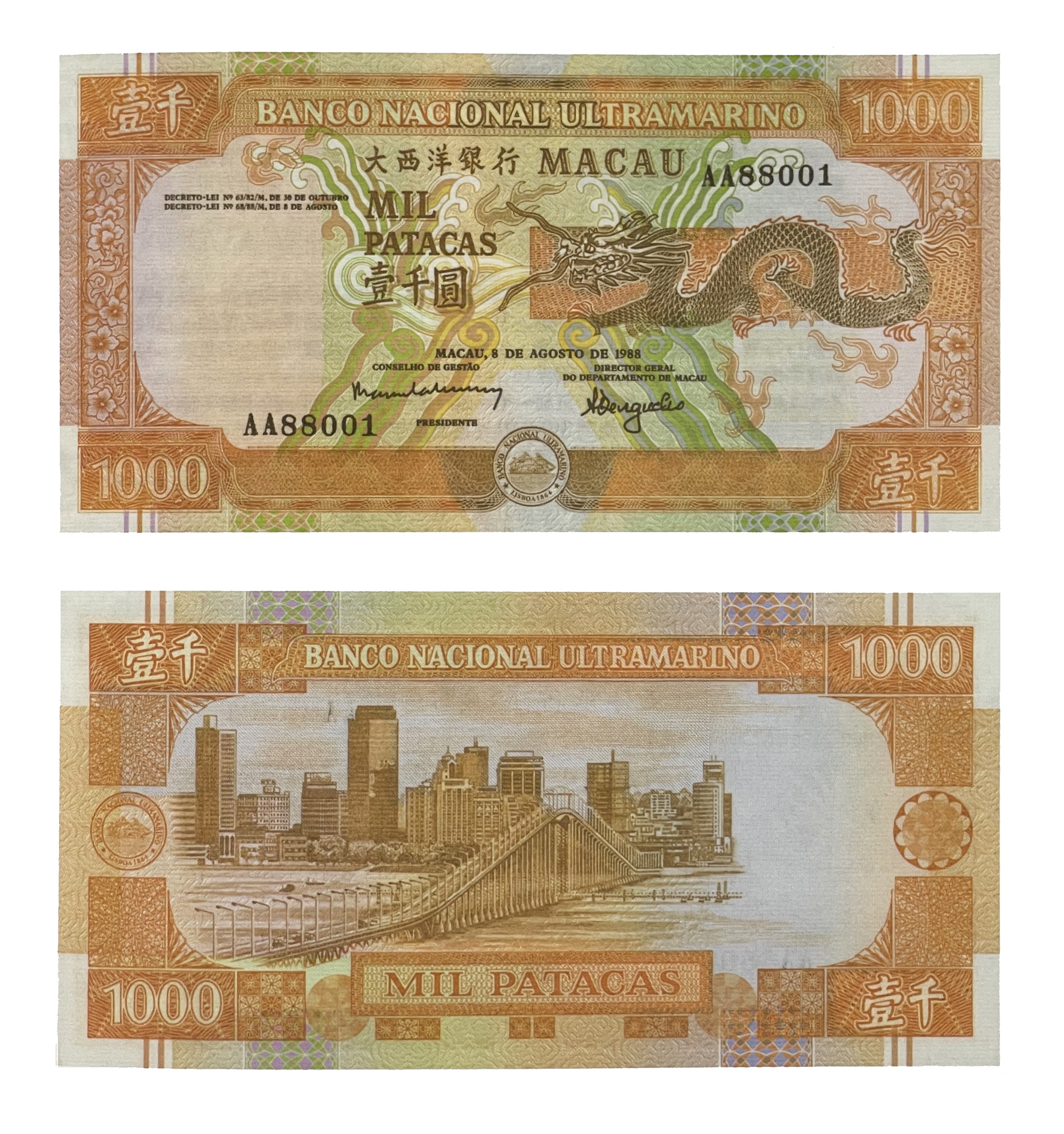
Macao’s banknotes were printed in Europe until the territory’s 1999 return to China, aside from a short period during World War II. While Macao, like Portugal, was neutral during the war, it couldn’t help but be affected by the widespread geopolitical turmoil – and that led to a severe currency shortage. The city’s population tripled due to an influx of refugees (many from Hong Kong, which was occupied by the Japanese), while a British blockade of Japanese-occupied areas decimated trade. An incoming shipment of freshly printed patacas was also unable to reach Macao from Europe. To ensure there was still cash on hand to spend, officials in Macao devised a stop-gap dubbed ‘emergency money’ that was printed locally.
Creating money is a highly complex operation, requiring specialised materials and tools. “[But] thanks to the locally renowned businessman and philanthropist Ho Yin acquiring some special printing paper from Hong Kong, Macao was able to print its own emergency banknotes,” says Chio. “The war was going on, it was very dangerous, but eventually the notes were printed by a local company called Litografia Sin Chon & Cia.”
Even back then, professionally printed money contained anti-replication techniques designed to prevent counterfeit notes entering circulation. Since this was impossible to achieve on the fly, local officials came up with their own security measures. Each note, for instance, had to be hand-signed by two men: the head of BNU’s Macao branch, and the director of the Financial Services Bureau. Printing staff were also made to eat and sleep at their place of work, watched over by Portuguese soldiers.
“Macao experienced a short burst of economic growth thanks to emergency money, because the rich people were able to spend it at the restaurants, casinos, and bars of Avenida de Almeida Ribeiro,” says Loi. Emergency money was phased out after the war, once Macao’s stock of genuine banknotes had been fully replenished.
It’s hard to find money that was printed before the end of World War II in Macao, according to Loi. “The turbulence of the first half of the 20th century led to a poor economy where people focussed on spending any money they had on food, not on saving it,” he explains.
During that period, Macao’s administrators also nullified old currency in circulation three to six months after each new batch of bills got issued. Residents rushed to change their soon-to-be defunct banknotes into usable ones, seldom thinking it worth hanging onto the old ones for posterity. They could hand soon-to-be defunct notes in at any bank in Macao, and that bank would deliver the money to BNU.
Post-war patacas, and avos
After the war ended, Macao’s new banknotes got prettier. They began featuring historical figures and local landmarks: the likes of Portuguese poet Luís Vaz de Camões and the influential ombudsman Miguel José de Arriaga Brum da Silveira; the Ruins of St Paul’s and Guia Fortress.
On the eighth day of the eighth month of 1988, Macao received its first 1,000 pataca banknote. Eight, of course, symbolises good fortune in Chinese culture – and this was the year after Portugal and China had signed a joint declaration paving the way for Macao’s handover. The yellow banknote featured a dragon motif on one side, and Governor Nobre de Carvalho Bridge on the other.
The first pataca and avos coins appeared in 1952, minted in Portugal. An array of different metals have been used to make them since then, including bronze, cupro-nickel, silver and brass. Most of Macao’s coins have been circular, but 12-sided 20 avo and and five pataca coins were produced for a brief period in the 1990s.
These days, Macao’s coins are minted locally while its banknotes are printed on the mainland. Issuing rights now belong to the Monetary Authority of Macao, for which BNU is an agent bank, as well as the Bank of China.
Coins for luck, not commerce
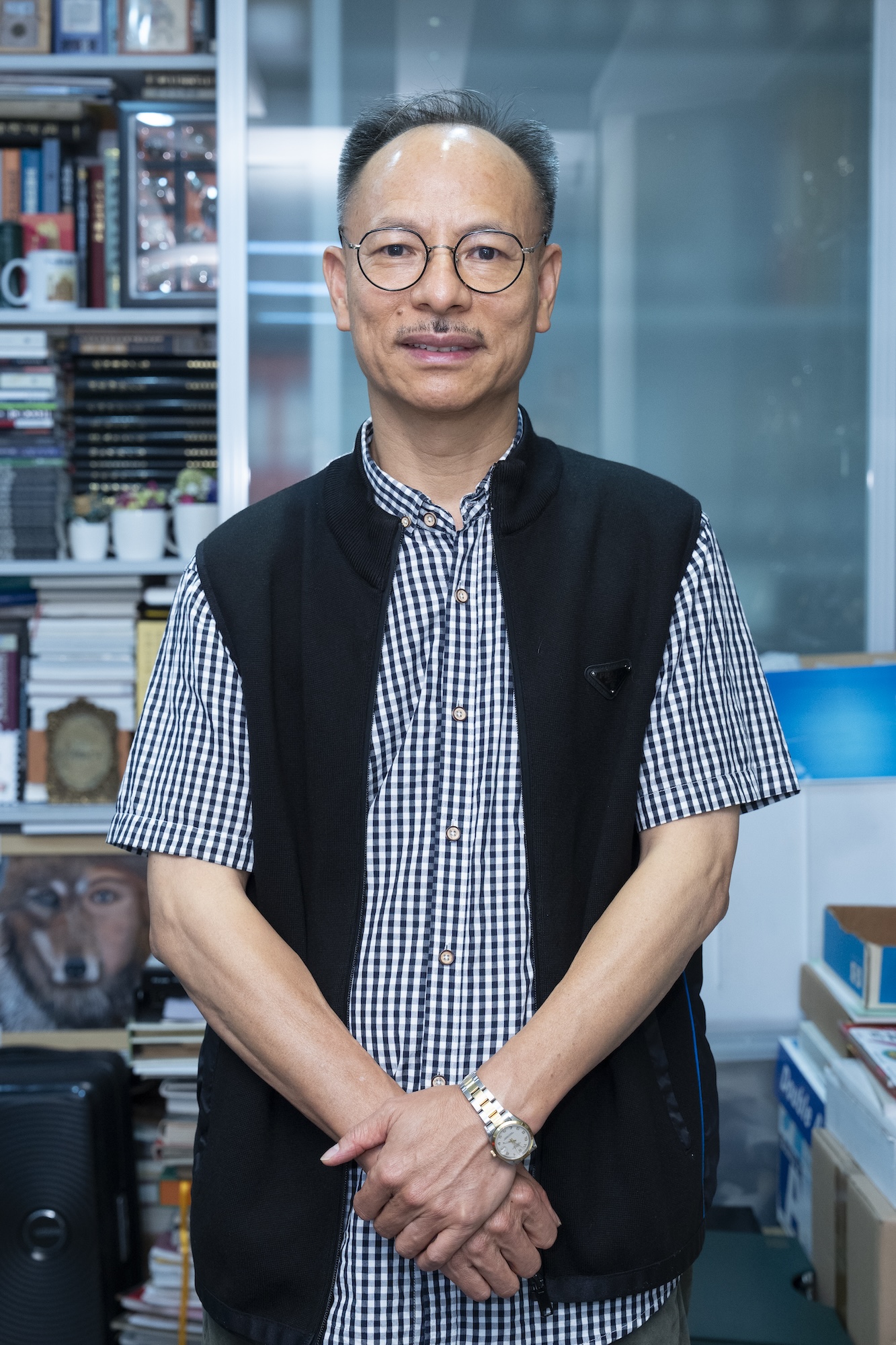
A couple in their sixties, Ho Seng Nam and U Sio Ieng are also members of the Macau Numismatic Society. Their interest in currency is less about the history of commerce, and more about ancient coins’ roles in Chinese folk beliefs. The pair began collecting these decorative coins in the 1970s, when many metal items – including old coins – were being melted down to make new products.
“I worked in Shenzhen and discovered there was a mint in Fushan that was melting down many such numismatic charms,” says Ho. “So, I went there to rescue some of them. I sometimes also visited some antique markets, such as the Beijing Panjiayuan Flea Market, to find old coins.”
His favourites date back a thousand years to the Song dynasty (960-1127 BCE). Song era coins tend to feature elegant calligraphy and auspicious symbols. Ho is interested in how coins have been used in feng shui (where they are believed to attract positive energy), to expel evil spirits, and bring about good fortune.
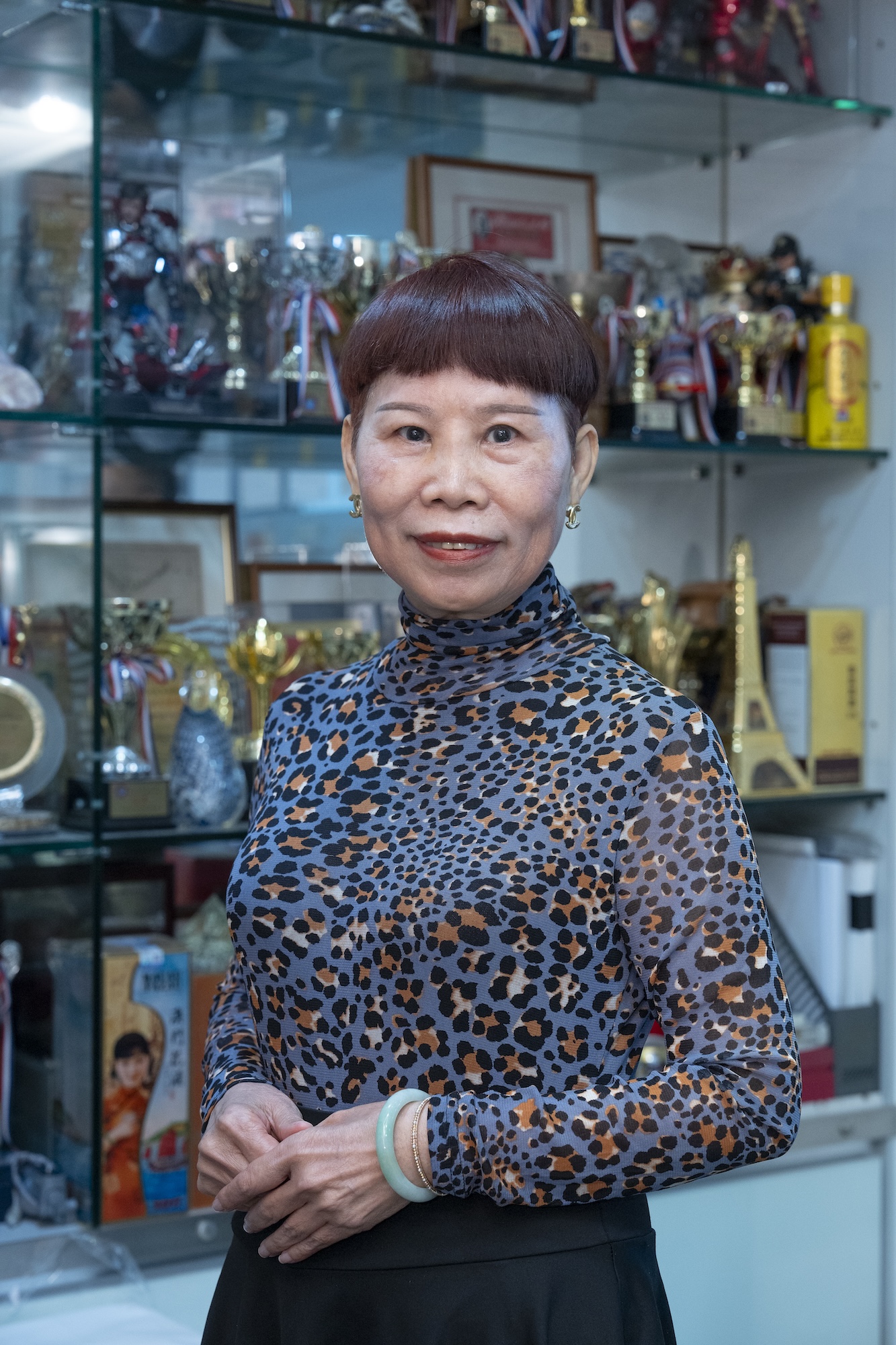
U, meanwhile, says she always carries a numismatic charm as a talisman. “I just feel comfortable when I have it with me,” she explains. The couple have also inspired their son, who is in his 30s, to collect coins. His special interest lies in those issued by Emperor Xianfeng during the Qing dynasty ruler’s troubled reign in the mid-1800s.
With Macao’s own currency’s tumultuous 120-year-long history, several centuries of ‘anything goes’ before that, and more than a millennia of Chinese qian – the territory’s numismatical history is rich. Even if the city does forgo cash in the future, the Macau Numismatic Society currency lovers will make sure it isn’t forgotten.
